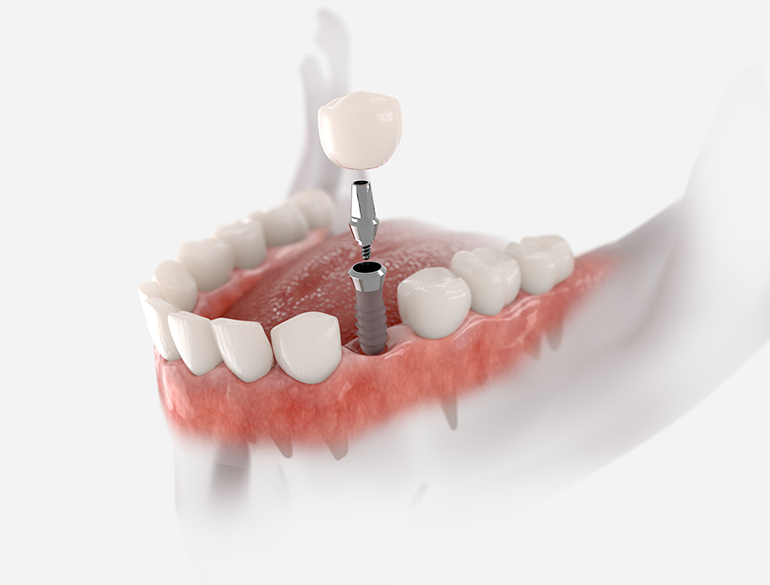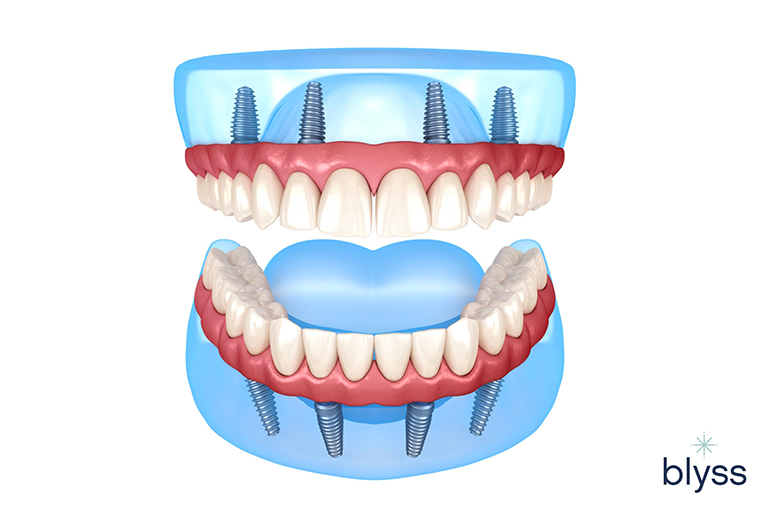The Best Guide To Dental Sense
The Best Guide To Dental Sense
Blog Article
The Ultimate Guide To Dental Sense
Table of ContentsThe smart Trick of Dental Sense That Nobody is Talking AboutNot known Incorrect Statements About Dental Sense Getting The Dental Sense To WorkThe 9-Second Trick For Dental Sense
are clinical gadgets surgically implanted right into the jaw to restore an individual's ability to eat or their look. They give assistance for man-made (phony) teeth, such as crowns, bridges, or dentures. When a tooth is shed because of injury or illness, a person can experience complications such as fast bone loss, defective speech, or adjustments to chewing patterns that result in pain.Oral dental implant systems consist of a dental implant body and oral implant joint and might likewise consist of a joint addiction screw. Cosmetic dentistry services. The oral implant body is operatively inserted in the jawbone in place of the tooth's root. The dental implant abutment is typically attached to the implant body by the abutment fixation screw and prolongs with gum tissues into the mouth to sustain the connected synthetic teeth
(https://pxhere.com/en/photographer-me/4492670)Structure of The Dental Implant System picking oral implants, talk with your oral copyright regarding the prospective benefits and risks, and whether you are a candidate for the treatment. Points to consider: Your overall health is a vital consider figuring out whether you are a great candidate for oral implants, for how long it will require to recover, and how long the implant may remain in place.
Smoking may influence the recovery procedure and lower the long-term success of the dental implant. The recovery procedure for the dental implant body might take several months or longer, throughout which time you typically have a short-term abutment in area of the tooth. the dental implant procedure: Meticulously comply with the oral health instructions offered to you by your oral service provider.
The Greatest Guide To Dental Sense
Implant failing can result in the demand for one more surgery to take care of or replace the implant system. Brings back the ability to eat Restores cosmetic look Assists maintain the jawbone from diminishing as a result of bone loss Protects the health of the bordering bone and gums Helps maintain surrounding (neighboring) teeth steady Boosts lifestyle Damages to surrounding natural teeth during dental implant positioning Injury to the surrounding cells throughout surgery, such as sinus opening Injury throughout surgical treatment (for instance, crack of bordering jawbone) Inadequate feature, such as feeling like the teeth do not bite with each other generally A feeling that the tooth is loose or twisting in location arising from a joint screw loosening Implant body failing (looseness of the implant body) due to systemic infection, which might be most likely in people with uncontrolled diabetes due to regional infection in bone and gums sustaining the dental implant body due to delayed recovery, which might be more probable in patients that smoke Difficulty cleaning the periodontals around the implant, leading to bad dental health Unattended periodontal condition Post-surgical feeling numb as a result of nerve impingement or damage Constantly alert healthcare suppliers and imaging technicians that you have oral implants prior to any magnetic resonance imaging (MRI) or x-ray treatments.
FDA is not familiar with any adverse events reported for MRI or x-ray procedures with oral implants. Oral implants systems are normally constructed from materials that comply with global agreement requirements of the International Organization for Standardization (ISO) or ASTM International. These criteria have information of what makes a risk-free product.

An oral implant is a structure that changes a missing tooth. With screw-like tools, the surgeon inserts an implant right into the jawbone, and it serves as an anchor for a man-made tooth, called a crown. A tool called an abutment attaches the synthetic tooth to the oral implant. The crown is customized to fit the individual's mouth and match the shade of their teeth.
Things about Dental Sense
Some individuals are not eligible for oral implant surgical procedure. It is for dental doctors to operate individuals with: intense illnessuncontrollable metabolic diseasebone or soft tissue disease or infectionIf these concerns are fixed, an individual can have the surgery. In, dental surgeons avoid operating individuals with: If people with any of the above undergo oral implant surgical treatment, there is a greater danger of the implant falling short.

Oral dental implant surgical procedure is an individualized procedure. It's not the same for everyone. However the following provides a general summary of what you can expect your dental expert, oral specialist, periodontist or prosthodontist to do: Put the implant operatively. Give you time to recover. Affix the message and last crown, bridge or denture.
Next off, your surgeon will carefully put the dental implant right into your jaw. If your implant is near the front of your mouth, your dental expert will make a short-term tooth for you to put on till you heal.
See This Report on Dental Sense
Your provider can inform you what to anticipate in your circumstance. Throughout this content the recovery stage, your jawbone ought to fuse to the oral implant. This process, called osseointegration, is essential for security and lasting success. This process can take anywhere from three to 9 months. In many cases, it may take much longer.
When your implant heals, your dental expert can attach the abutment (little adapter article) and your last repair (crown, bridge or denture). This typically takes concerning one hour to finish and might need a 2nd minor surgical procedure. You should not feel any kind of pain during your dental implant procedure because your service provider will certainly make use of medication to numb your periodontals.
Report this page